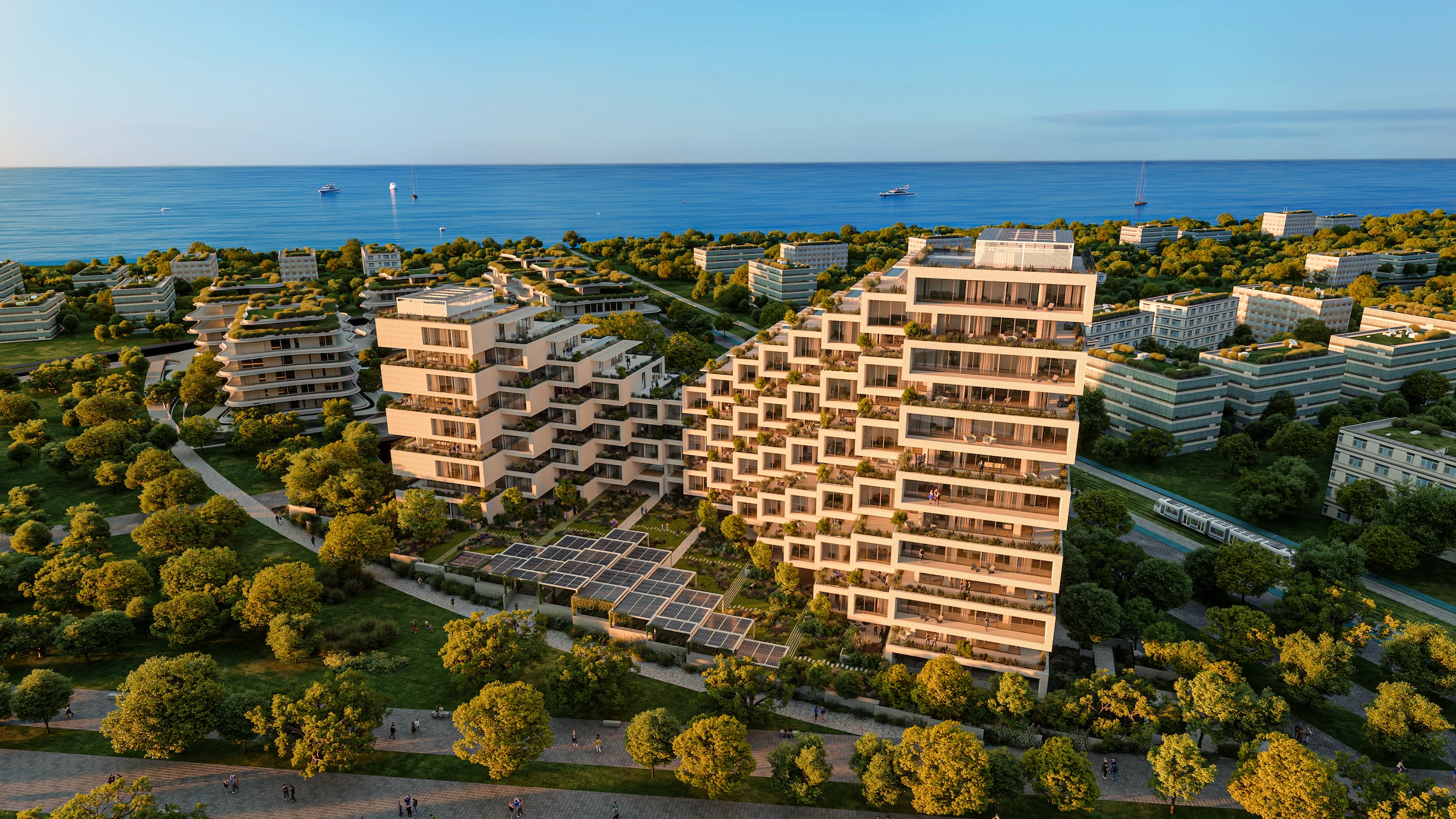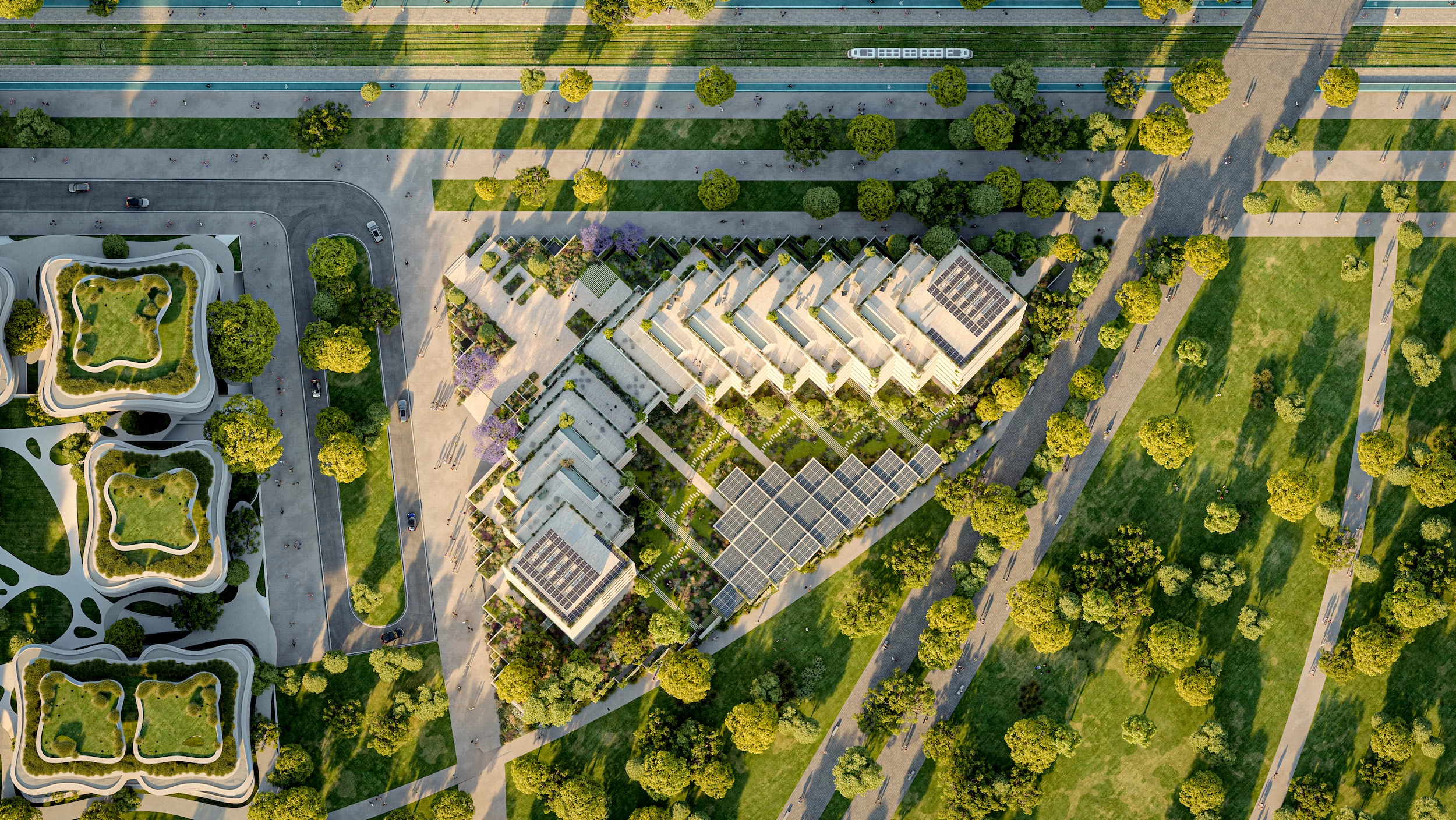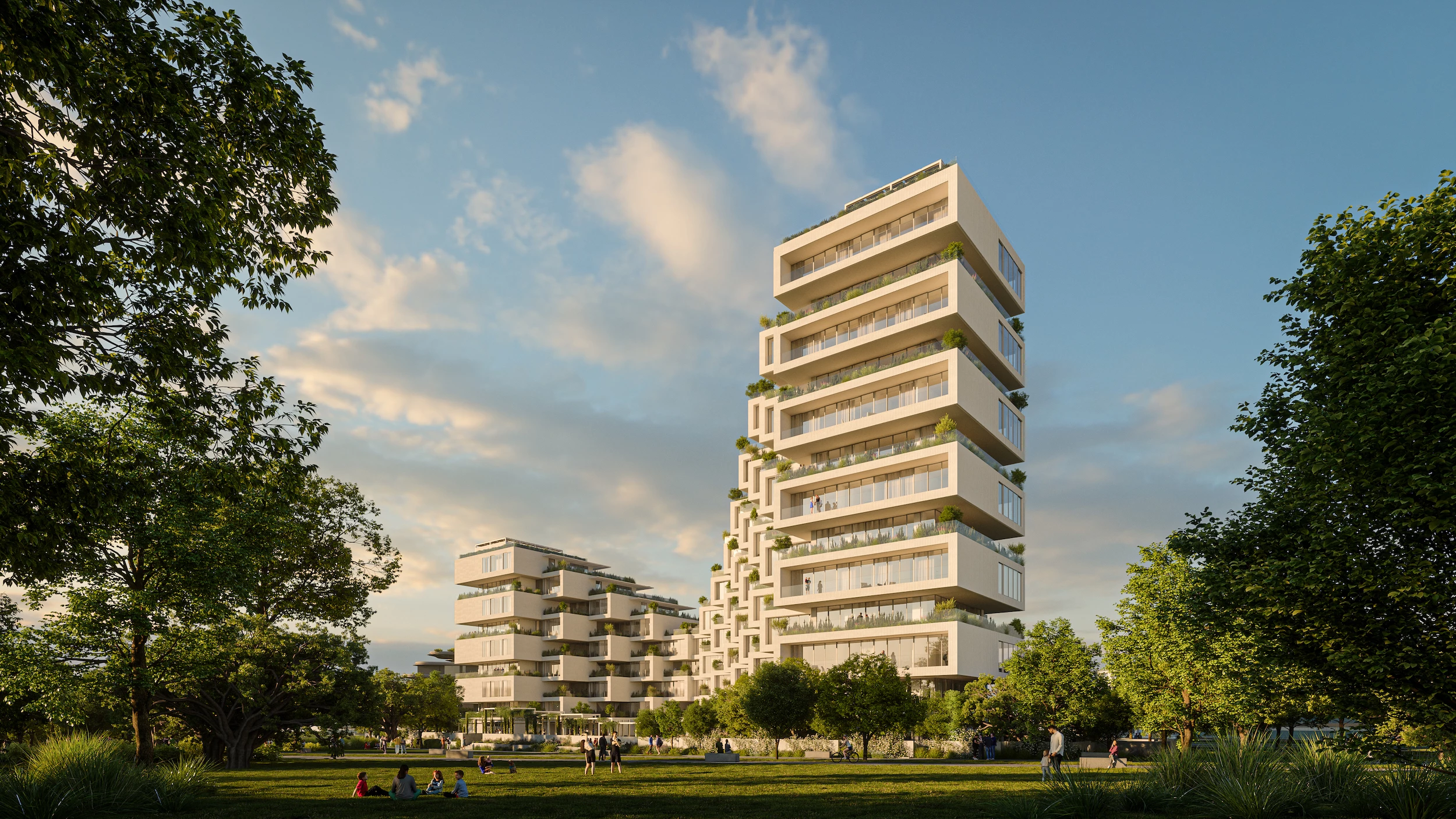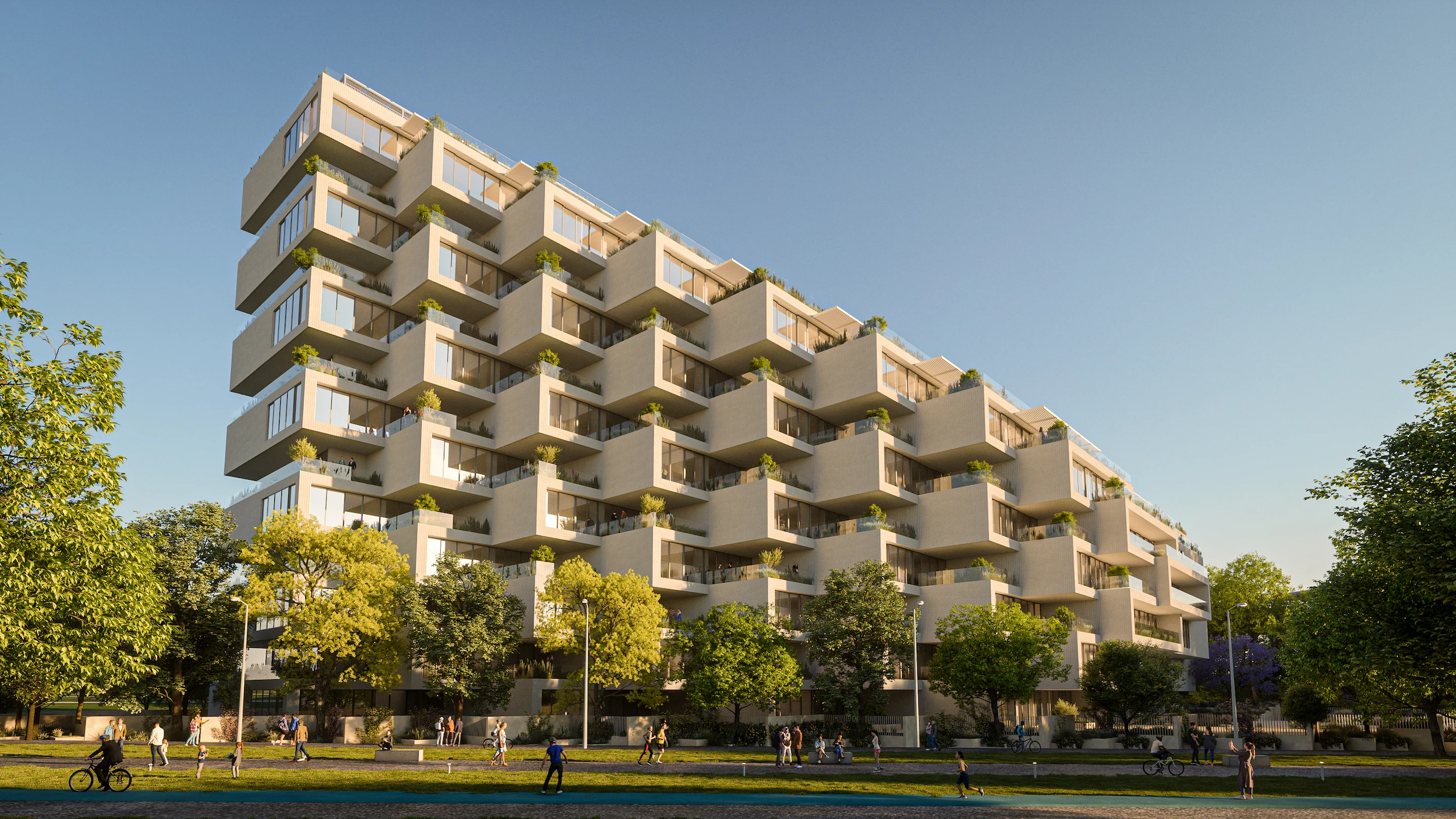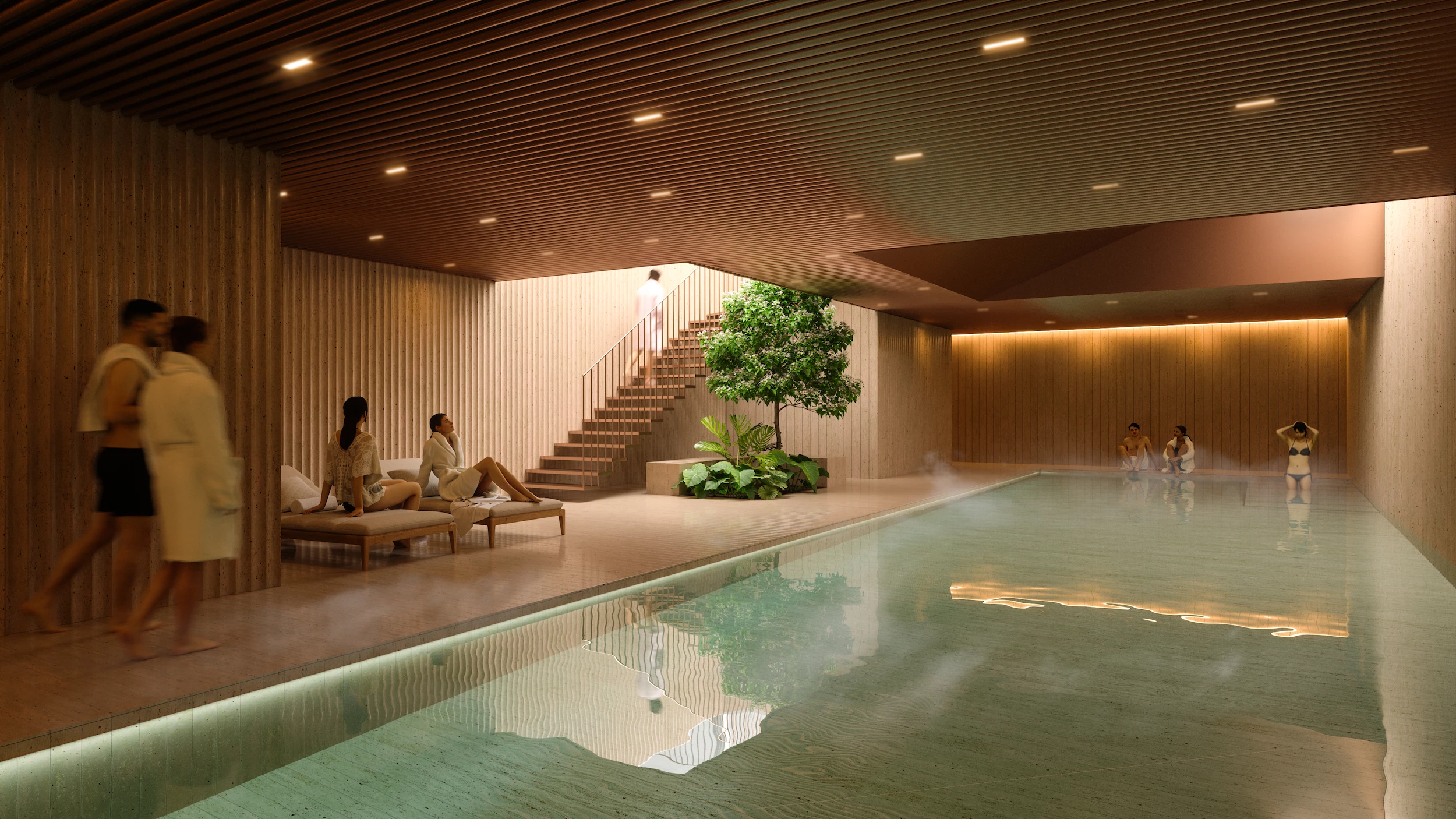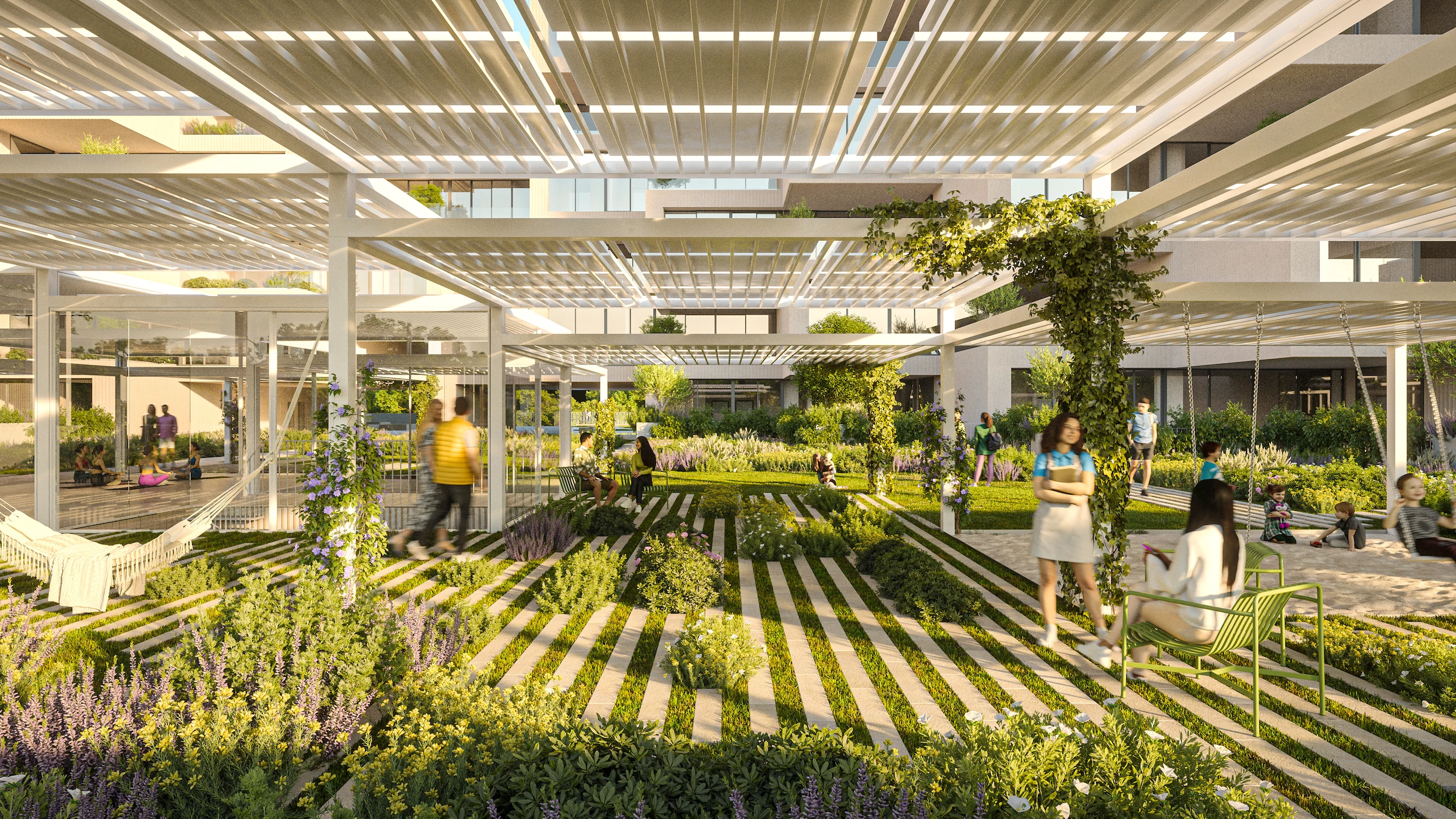The Bjarke Ingels Group (BIG) has designed a new luxury residential project planned for Greece. The building will feature a complex overall form that's shaped into an eye-catching stepped volume meant to reimagine classic Greek architectural columns.
The project is named Park Rise and will be located in Athens, as part of a larger development that also includes Foster + Partners' Marina Tower, which will be the tallest skyscraper in the country.
Park Rise will reach a height of 50 m (164 ft). Structurally, it will consist of five cores: two will rise to five floors, two will rise to eight floors, and one will rise to 12 floors, lending the building its unusual shape. Its boxy exterior brings to mind BIG's Iqon and will form lots of plant-filled terrace and balcony areas for residents.
"The project's curved concave facade creatively reimagines the classic Greek column while adding a soft geometry to the aesthetic," noted a press release by developer Lamda. "This geometric precision features flute patterns on vertical areas and smooth finishes on soffits and flooring to present an elegant interplay of textures, while the exterior facade boasts off-white glass-reinforced concrete with exposed aggregates harkening to the natural landscape. Nestled amidst Greece's breathtaking scenery, Park Rise offers sweeping views of Aegean Sea on one side and the mountains of Attica on the other. Enveloped by the lush beauty of the Ellinikon Park, the design seamlessly pays tribute to Athens' coastal charm."
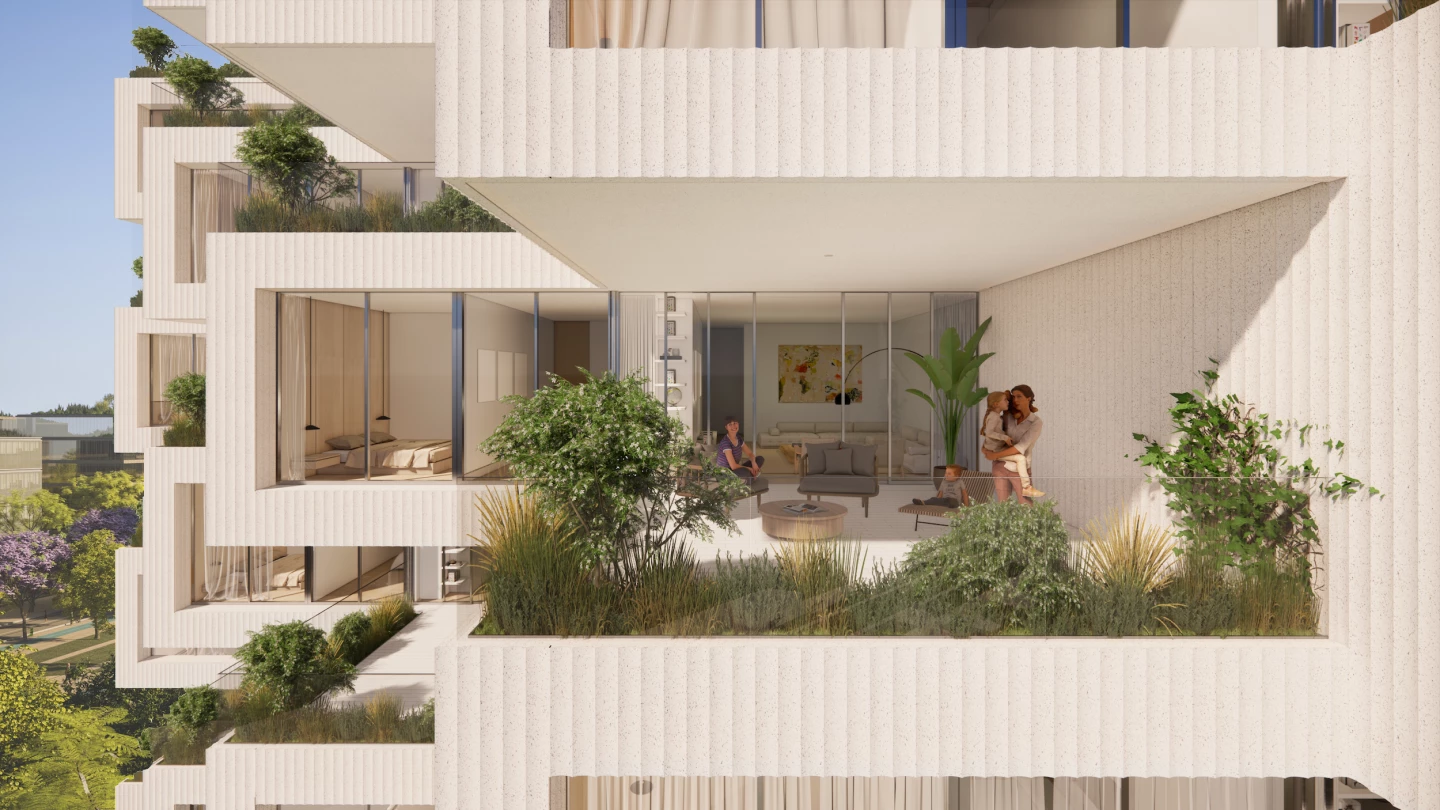
The interior of the building will host 88 apartments, ranging from one to five bedrooms. As you'd expect, it'll be very luxurious, with oak floors, lots of glass to show off the coastal view, and stone and chrome finishes. Penthouse suites will boast their own private swimming pools and the amenities will include an indoor saltwater swimming pool and private garden areas.
Park Rise's press release promises a significant level of sustainability, however all we know so far is that it will make use of multiple solar panel arrays to reduce the building's power draw on the grid. There's no word yet on when this one is expected to be completed.

